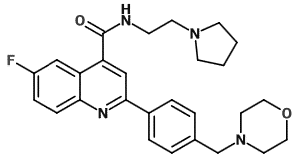Researchers have discovered an antimalarial compound that shows promise for killing the deadliest malaria parasite, Plasmodium falciparum, at multiple stages of its life cycle. High-throughput screening of more than 4700 molecules yielded an effective antimalarial molecule that was further chemically optimized to produce a quinoline diamine, called DDD107498, which kills the parasite by inhibiting its ribosomes' ability to synthesize proteins. The research team, led by scientists from the Drug Discovery Unit of the University of Dundee in the United Kingdom, reported this result in the journal Nature (June 2015). See also: Haemosporina; Malaria; Medical parasitology; Parasitology; Pharmaceutical chemistry; Sporozoa

According to the World Health Organization (WHO), there were 200 million cases of malaria and 584,000 deaths from it in 2013. Children accounted for up to 90 percent of these deaths, which occurred predominately in sub-Saharan Africa, where P. falciparum is most prevalent. Since 2000, malaria mortality rates have fallen by 54 percent in Africa and by 47 percent worldwide, according to the WHO. This improvement is due to prevention measures (such as sleeping under insecticidal nets) and the use of the drug artemisinin in combination with other malaria drugs. However, the rise of artemisinin resistance in P. falciparum is becoming a major concern among health-care organizations. See also: Africa; Drug resistance; Public health
Artemisinin drugs only kill malaria parasites during the stages in their life cycle when they are inside red blood cells. DDD107498, in contrast, appears to be effective at killing P. falciparum at many points, including the usual infectious stage. Mosquitos become infected when they withdraw human blood containing Plasmodium gametocytes, so DDD107498 may be useful in preventing the spread of the disease. It also may be possible to use DDD107498 to prevent individuals from contracting the disease. If DDD107498 successfully completes safety testing, as is expected, it should be ready for clinical testing in about one year. See also: Mosquito: vector of disease





